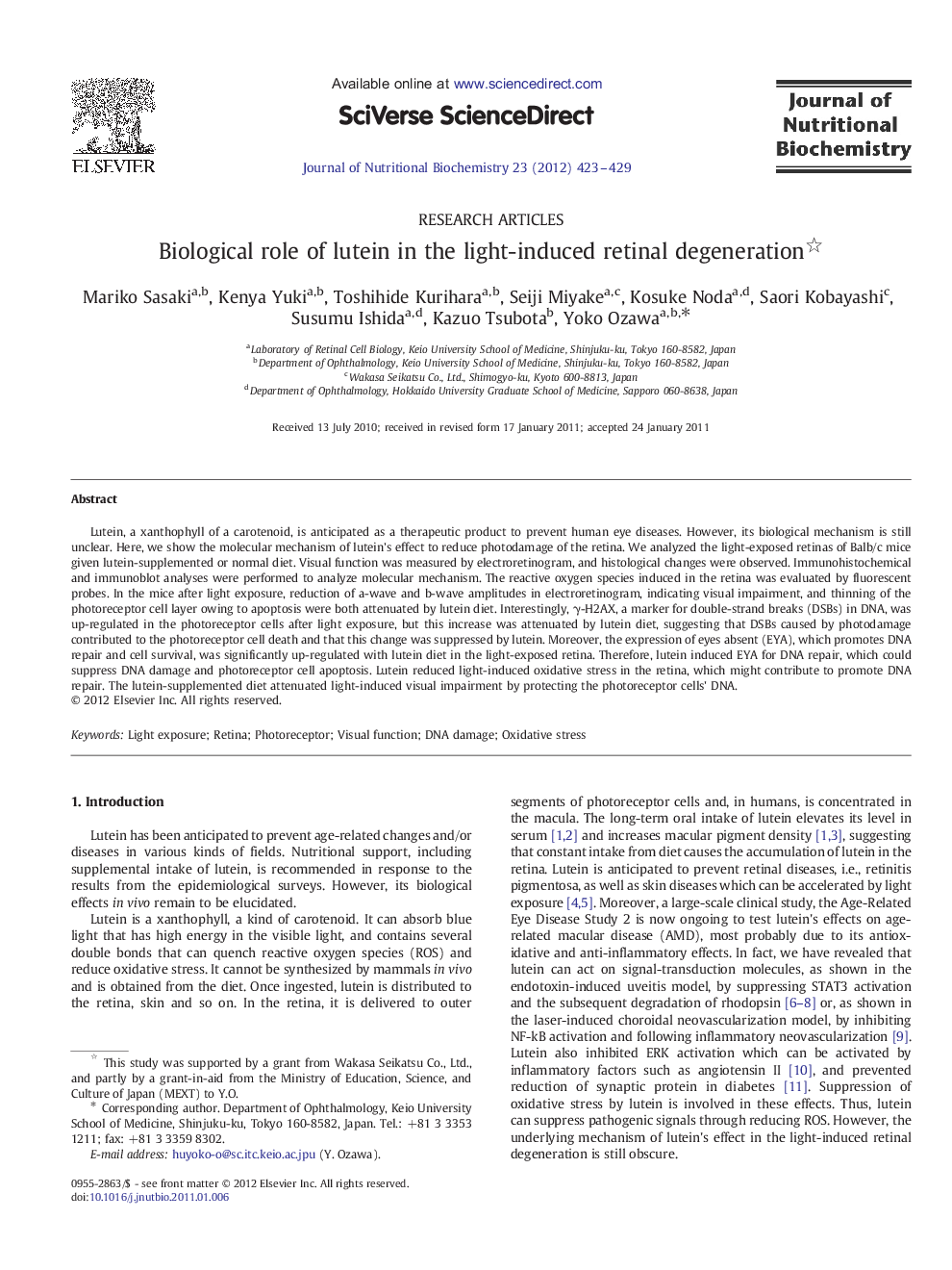| Article ID | Journal | Published Year | Pages | File Type |
|---|---|---|---|---|
| 1989921 | The Journal of Nutritional Biochemistry | 2012 | 7 Pages |
Lutein, a xanthophyll of a carotenoid, is anticipated as a therapeutic product to prevent human eye diseases. However, its biological mechanism is still unclear. Here, we show the molecular mechanism of lutein's effect to reduce photodamage of the retina. We analyzed the light-exposed retinas of Balb/c mice given lutein-supplemented or normal diet. Visual function was measured by electroretinogram, and histological changes were observed. Immunohistochemical and immunoblot analyses were performed to analyze molecular mechanism. The reactive oxygen species induced in the retina was evaluated by fluorescent probes. In the mice after light exposure, reduction of a-wave and b-wave amplitudes in electroretinogram, indicating visual impairment, and thinning of the photoreceptor cell layer owing to apoptosis were both attenuated by lutein diet. Interestingly, γ-H2AX, a marker for double-strand breaks (DSBs) in DNA, was up-regulated in the photoreceptor cells after light exposure, but this increase was attenuated by lutein diet, suggesting that DSBs caused by photodamage contributed to the photoreceptor cell death and that this change was suppressed by lutein. Moreover, the expression of eyes absent (EYA), which promotes DNA repair and cell survival, was significantly up-regulated with lutein diet in the light-exposed retina. Therefore, lutein induced EYA for DNA repair, which could suppress DNA damage and photoreceptor cell apoptosis. Lutein reduced light-induced oxidative stress in the retina, which might contribute to promote DNA repair. The lutein-supplemented diet attenuated light-induced visual impairment by protecting the photoreceptor cells' DNA.
